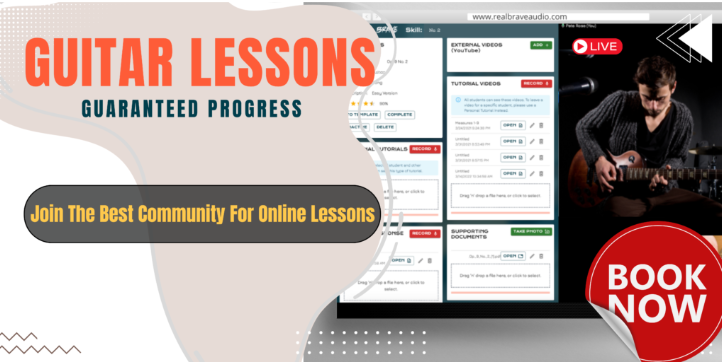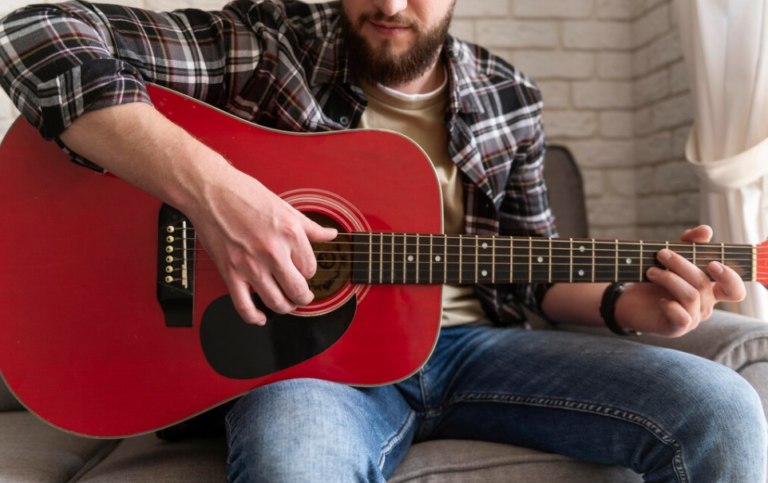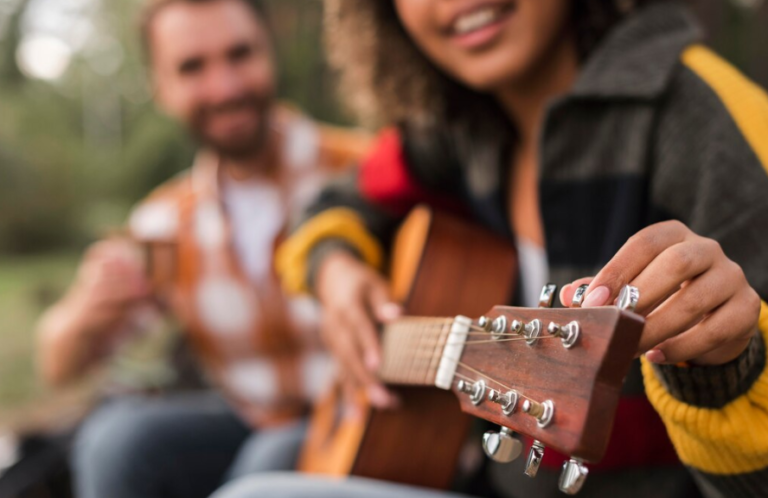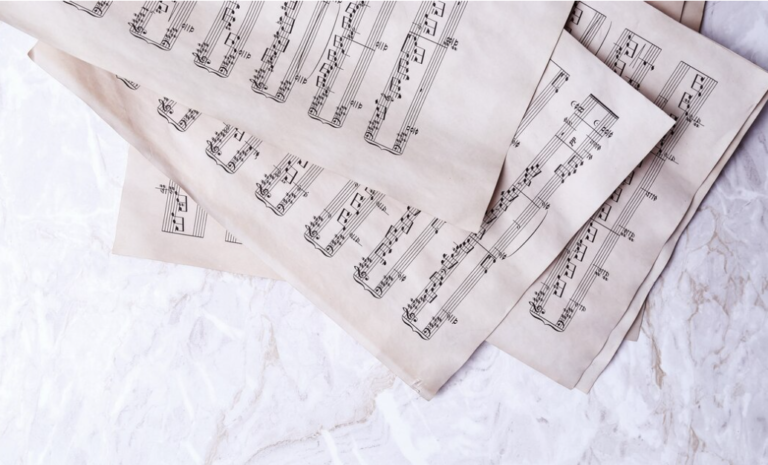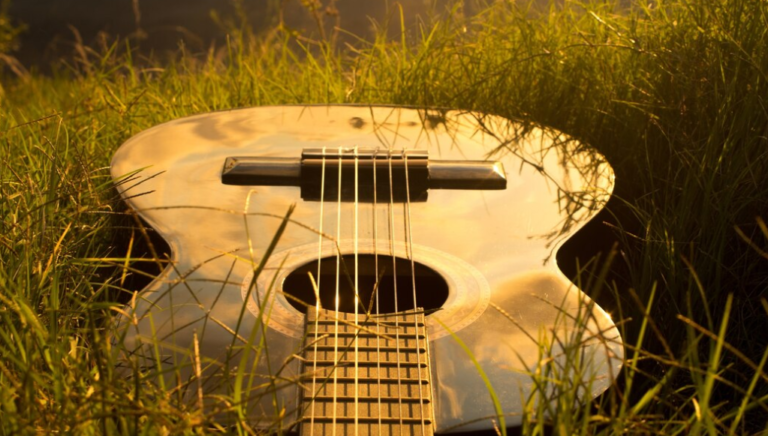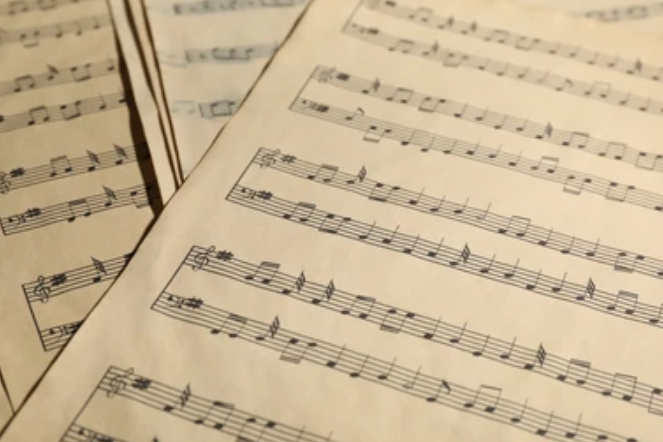Guitar Rhythm: How to Read and Count it Easy
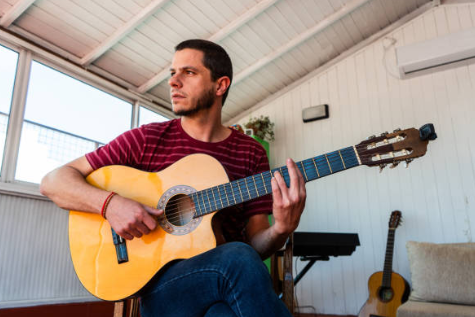
When learning guitar, many players focus on mastering chords, scales, and flashy techniques. While these are essential, there’s another critical skill that often gets overlooked: guitar rhythm. Understanding rhythm notation and learning how to count guitar rhythms can elevate your playing, helping you stay in sync with other musicians and play with confidence.
In this blog, we’ll break down the basics of rhythm notation, show you how to count guitar rhythm, and share tips for developing your rhythmic accuracy.
Why Is Rhythm Important?
Rhythm is the backbone of music—it gives a song its groove and structure. Even if you play the right notes, missing the rhythm can make your playing feel disconnected or offbeat. Guitar rhythm notation serves as a guide, showing when to play each note and for how long. By learning this, you’ll:
- Improve your timing and consistency.
- Play more confidently with others.
- Unlock the ability to read and play music accurately.
The Basics of Rhythm Notation
Music notation uses specific symbols to represent rhythm. Let’s start with the basics:
1. The Staff and Time Signature
- The Staff: Rhythm notation is written on a staff, typically with a time signature at the beginning. The time signature tells you how many beats are in a measure and what note value gets one beat. For example:
- 4/4 time: (common time) means four beats per measure, with a quarter note getting one beat.
- 3/4 time: means three beats per measure.
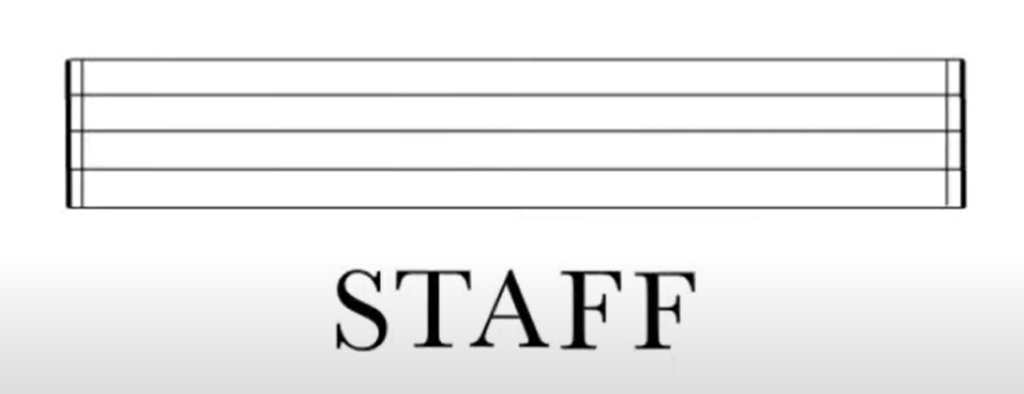
2. Note Durations
Each note symbol represents a specific duration of time:
- Whole Note (𝅝): Lasts for four beats in 4/4 time.
- Half Note (𝅗𝅥): Lasts for two beats.
- Quarter Note (𝅘𝅥): Lasts for one beat.
- Eighth Note (𝅘𝅥𝅮): Lasts for half a beat.
- Sixteenth Note (𝅘𝅥𝅯): Lasts for one-quarter of a beat.
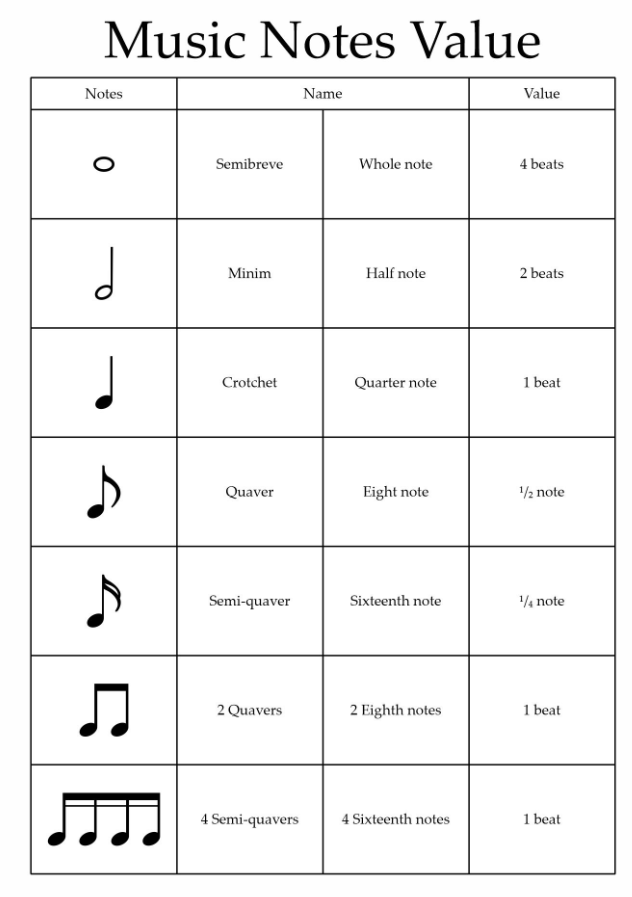
3. Rests
Rests indicate silence. They follow the same time values as notes:
- Whole Rest: Four beats of silence.
- Half Rest: Two beats of silence.
- Quarter Rest: One beat of silence.
- Eighth Rest: Half a beat of silence.

How to Count Rhythms
Counting is the foundation of rhythmic accuracy. Here’s how to approach it:
Step 1: Understand the Beat
The beat is the steady pulse of the music. In 4/4 time, each beat corresponds to a quarter note. Clap along to a metronome to get a feel for the beat.
Step 2: Subdivide the Beat
To count rhythms accurately, subdivide the beat into smaller units. For example:
- Quarter notes: Count “1, 2, 3, 4.”
- Eighth notes: Count “1 & 2 & 3 & 4 &.”
- Sixteenth notes: Count “1 e & a 2 e & a 3 e & a 4 e & a.”
Step 3: Practice with Examples
Here’s a simple rhythm exercise in 4/4 time:
- Measure 1: Four quarter notes (count “1, 2, 3, 4”).
- Measure 2: Two half notes (count “1-2, 3-4”).
- Measure 3: One whole note (count “1-2-3-4”).
- Measure 4: Eight eighth notes (count “1 & 2 & 3 & 4 &”).
Clap or tap each rhythm while counting out loud.
How to Read Guitar Rhythms
Guitar rhythm notation for guitar is often written in “tablature (TAB)” or “standard notation”, sometimes accompanied by strumming diagrams or chord charts. To read guitar rhythms:
- Look at the Note Values: Identify the rhythm of each note or chord. For example, if a chord symbol is paired with a quarter note, strum it once per beat.
- Pay Attention to Rests: Follow the rest to know when to pause or mute your playing.
- Follow the Time Signature: Make sure you understand how many beats are in each measure and what note gets one beat.
Practice Tips for Rhythm Mastery
- Use a Metronome: A metronome is your best friend when practicing rhythm. Start slow and increase the tempo gradually.
- Clap Before You Play: Clap the rhythm first to internalize it before adding the guitar.
- Practice Common Patterns: Focus on common strumming or picking patterns, such as:
- Down-up-down-up for eighth notes.
- Down for quarter notes and up for off-beats.
4. Count Out Loud: Saying the counts out loud while playing helps solidify the rhythm.
5. Record Yourself: Recording your practice sessions allows you to identify and correct timing issues.
Bringing It All Together
Understanding rhythm notation and how to count guitar rhythms might seem challenging at first, but with regular practice, it becomes second nature. Rhythm is what makes music feel alive, so investing time in developing this skill will make you a better guitarist and a more confident musician.
Remember, rhythm is a journey, not a destination. Take it one beat at a time, and you’ll soon find yourself grooving to the music with ease!
Interested in taking your guitar skills to the next level? Click the below and book a free lesson with us! We’re committed to helping you express yourself freely on the guitar without endless scales and theory. Happy playing!
Author: Daniel Powers Jr, the founder of Real Brave™, serves as the chief inspiration to thousands of students in the Real Brave music instruction program. He’s also the visionary behind PracticePad™, an online platform for live one-on-one online music lessons, lesson tracking, and scheduling. Beyond his entrepreneurial pursuits, Daniel leads a non-profit organization that provides formerly homeless children with access to music education, making a profound impact on their lives. His unwavering dedication to music, innovation, and education continues to inspire individuals to reach their fullest potential while creating positive change in communities. Follow Real Brave on all the socials:
youtube.com/@realbraveinc
twitter.com/realbraveinc
https://www.tiktok.com/@realbraveinc
instagram.com/realbraveaudio
facebook.com/realbraveinc
